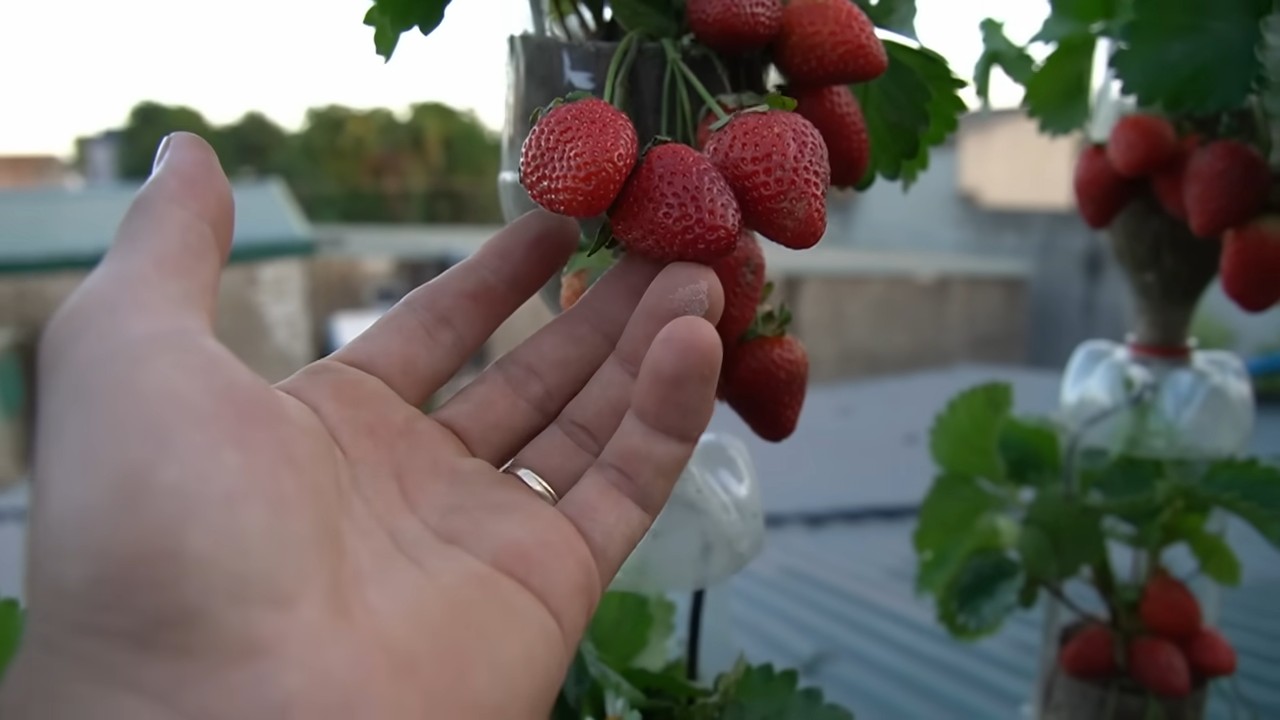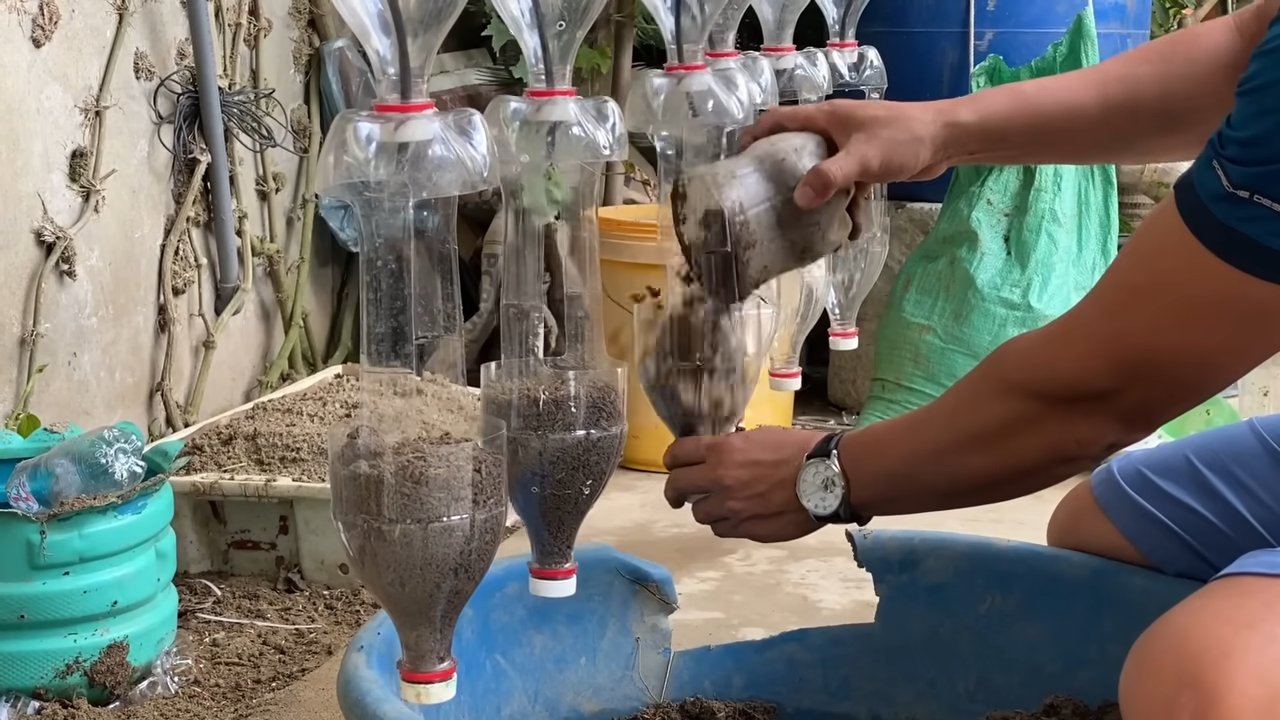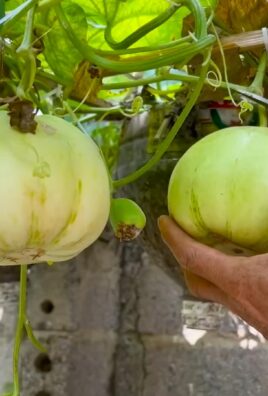DIY Strawberry Tower: Imagine plucking juicy, sun-ripened strawberries right from your own backyard, even if you’re short on space! That’s the magic of a DIY strawberry tower, and I’m here to show you how to build one yourself. Forget those expensive store-bought berries that lack flavor; with this simple project, you’ll be enjoying homegrown goodness all season long.
Growing strawberries vertically isn’t a new concept. In fact, vertical gardening techniques have been used for centuries across various cultures to maximize space and improve yields. From ancient hanging gardens to modern urban farms, the idea of growing upwards has always been a clever solution. But why is a DIY Strawberry Tower so essential now? Well, more and more people are living in apartments or smaller homes with limited gardening space. Plus, who doesn’t love a fun and rewarding DIY project?
This isn’t just about saving space; it’s about creating a beautiful and productive garden feature. A strawberry tower adds visual interest to your patio, balcony, or garden, and it’s a fantastic conversation starter. More importantly, it provides easy access to your delicious strawberries, keeping them off the ground and away from pests. So, are you ready to roll up your sleeves and create your own thriving vertical strawberry patch? Let’s get started!

Erdbeerturm selber bauen: Eine Schritt-für-Schritt-Anleitung
Hallo liebe Gartenfreunde! Ich zeige euch heute, wie ihr einen wunderschönen und platzsparenden Erdbeerturm selber bauen könnt. So habt ihr eine reiche Erdbeerernte, auch wenn ihr nur einen kleinen Balkon oder Garten habt. Keine Sorge, es ist einfacher als es aussieht!
Was du brauchst:
* Tontöpfe in verschiedenen Größen: Ich empfehle 3-5 Töpfe, die sich in der Größe deutlich unterscheiden. Zum Beispiel: ein großer Topf (ca. 40 cm Durchmesser), ein mittelgroßer Topf (ca. 30 cm Durchmesser), ein kleiner Topf (ca. 20 cm Durchmesser) und eventuell noch zwei kleinere Töpfe (ca. 15 cm Durchmesser).
* Pflanzerde: Am besten eine spezielle Erdbeererde, die ist nährstoffreich und sorgt für eine gute Drainage.
* Drainagematerial: Blähton oder Kies, um Staunässe zu vermeiden.
* Unkrautvlies (optional): Hilft, das Unkrautwachstum zu reduzieren.
* Erdbeerpflanzen: Wähle am besten verschiedene Sorten, damit du über einen längeren Zeitraum ernten kannst.
* Gießkanne oder Schlauch: Zum Bewässern deiner Erdbeeren.
* Schere oder Messer: Zum Zuschneiden des Unkrautvlieses.
* Handschuhe: Um deine Hände sauber zu halten.
* Eventuell: Eine lange Stange oder ein Rohr (z.B. aus Bambus oder PVC), um den Turm zusätzlich zu stabilisieren.
Vorbereitung ist alles:
Bevor wir loslegen, sollten wir alles vorbereiten. Das spart Zeit und Nerven!
1. Töpfe reinigen: Wenn du gebrauchte Töpfe verwendest, reinige sie gründlich mit Wasser und einer Bürste. So entfernst du Schmutz und eventuelle Krankheitserreger.
2. Standort wählen: Such dir einen sonnigen Platz für deinen Erdbeerturm aus. Erdbeeren lieben die Sonne! Achte darauf, dass der Standort auch gut erreichbar ist, damit du deine Erdbeeren bequem ernten kannst.
3. Material bereitstellen: Lege alle Materialien und Werkzeuge bereit, damit du alles griffbereit hast.
Der Aufbau des Erdbeerturms:
Jetzt geht’s ans Eingemachte! Wir bauen unseren Erdbeerturm Schicht für Schicht auf.
1. Drainage legen: Beginne mit dem größten Topf. Fülle den Boden des Topfes mit einer Schicht Blähton oder Kies. Das sorgt für eine gute Drainage und verhindert Staunässe, die Erdbeeren gar nicht mögen. Eine Schicht von etwa 5-10 cm ist ideal.
2. Erde einfüllen: Fülle den Topf mit Erdbeererde. Lass oben etwa 5 cm Platz, damit du beim Gießen nicht alles überschwemmst.
3. Ersten Topf platzieren: Nimm den nächstkleineren Topf und platziere ihn mittig auf der Erde im großen Topf. Drücke ihn leicht an, damit er stabil steht.
4. Erde einfüllen (zweiter Topf): Fülle auch diesen Topf mit Erde. Achte darauf, dass der Rand des unteren Topfes noch etwas sichtbar bleibt.
5. Wiederholen: Wiederhole die Schritte 3 und 4 mit den restlichen Töpfen, bis du den kleinsten Topf ganz oben platziert hast.
6. Optional: Stabilität erhöhen: Wenn du eine Stange oder ein Rohr verwendest, stecke es jetzt vorsichtig durch die Mitte aller Töpfe. Das gibt dem Turm zusätzliche Stabilität, besonders wenn er hoch wird.
Die Bepflanzung:
Jetzt kommen die Erdbeerpflanzen ins Spiel!
1. Pflanzen vorbereiten: Nimm die Erdbeerpflanzen aus ihren Töpfen und lockere die Wurzeln vorsichtig auf. Das hilft den Pflanzen, sich besser im neuen Erdreich zu verwurzeln.
2. Pflanzen setzen (untere Töpfe): Setze die Erdbeerpflanzen in die unteren Töpfe. Verteile sie gleichmäßig um den Rand des Topfes. Achte darauf, dass die Wurzeln gut mit Erde bedeckt sind, aber das Herz der Pflanze (der Punkt, wo die Blätter aus dem Boden kommen) frei bleibt.
3. Pflanzen setzen (obere Töpfe): Setze die Erdbeerpflanzen auch in die oberen Töpfe. Hier kannst du sie etwas dichter pflanzen, da die Töpfe kleiner sind.
4. Gießen: Gieße alle Pflanzen gründlich an. Das hilft den Wurzeln, sich schnell mit der Erde zu verbinden.
Unkrautvlies anbringen (optional):
Das Unkrautvlies hilft, das Unkrautwachstum zu reduzieren und die Erde feucht zu halten.
1. Vlies zuschneiden: Schneide das Unkrautvlies in passende Stücke für die einzelnen Töpfe zu.
2. Vlies anbringen: Lege das Vlies um die Erdbeerpflanzen in den Töpfen. Befestige es eventuell mit kleinen Steinen oder Erdspießen.
Die Pflege deines Erdbeerturms:
Damit deine Erdbeeren prächtig gedeihen, ist die richtige Pflege wichtig.
1. Gießen: Gieße deine Erdbeeren regelmäßig, besonders an heißen Tagen. Achte darauf, dass die Erde immer leicht feucht ist, aber nicht nass. Am besten gießt du morgens oder abends, wenn die Sonne nicht so stark scheint.
2. Düngen: Dünge deine Erdbeeren regelmäßig mit einem speziellen Erdbeerdünger. Befolge dabei die Anweisungen auf der Packung.
3. Ausgeizen: Entferne regelmäßig die Ausläufer der Erdbeerpflanzen, damit die Pflanzen ihre Energie in die Fruchtbildung stecken können.
4. Schutz vor Schädlingen: Kontrolliere deine Erdbeeren regelmäßig auf Schädlinge wie Schnecken oder Blattläuse. Bei Bedarf kannst du natürliche Schädlingsbekämpfungsmittel einsetzen.
5. Ernten: Ernte deine Erdbeeren, sobald sie reif sind. Reife Erdbeeren sind leuchtend rot und lassen sich leicht vom Stiel lösen.
Zusätzliche Tipps für eine reiche Ernte:
* Sortenwahl: Wähle verschiedene Erdbeersorten, die zu unterschiedlichen Zeiten reifen. So kannst du über einen längeren Zeitraum ernten.
* Sonnenstand: Achte darauf, dass dein Erdbeerturm genügend Sonne bekommt. Erdbeeren brauchen mindestens 6 Stunden Sonne pro Tag.
* Windschutz: Stelle deinen Erdbeerturm an einen windgeschützten Ort. Starker Wind kann die Pflanzen austrocknen und die Blüten beschädigen.
* Überwinterung: Im Winter solltest du deinen Erdbeerturm vor Frost schützen. Du kannst ihn zum Beispiel mit Vlies abdecken oder an einen geschützten Ort stellen.
Häufige Fehler vermeiden:
* Staunässe: Vermeide Staunässe, indem du für eine gute Drainage sorgst.
* Überdüngung: Überdünge deine Erdbeeren nicht, da dies zu einem übermäßigen Wachstum der Blätter und zu weniger Früchten führen kann.
* Falscher Standort: Stelle deinen Erdbeerturm nicht an einen zu schattigen Ort, da die Erdbeeren sonst nicht genügend Sonne bekommen.
Variationen des Erdbeerturms:
* Erdbeerturm aus Paletten: Du kannst auch einen Erdbeerturm aus alten Paletten bauen. Das ist eine tolle Möglichkeit, um alte Paletten wiederzuverwenden.
* Erdbeerturm aus Rohren: Du kannst auch einen Erdbeerturm aus PVC-Rohren bauen. Das ist eine sehr platzsparende Variante.
* Vertikaler Garten: Du kannst deinen Erdbeerturm auch mit anderen Pflanzen kombinieren und einen vertikalen Garten gestalten.
Ich hoffe, diese Anleitung hilft dir dabei, deinen eigenen Erdbeerturm zu bauen. Viel Spaß beim Gärtnern und eine reiche Erdbeerernte! Wenn du Fragen hast, kannst du sie gerne in den Kommentaren stellen. Ich helfe dir gerne weiter!

Conclusion
So, there you have it! Building your own DIY Strawberry Tower isn’t just a fun weekend project; it’s a gateway to a season filled with fresh, juicy strawberries right outside your door. Forget those expensive, often underwhelming berries from the grocery store. Imagine stepping into your garden and plucking sun-ripened strawberries, bursting with flavor, whenever you crave them. This project offers a sustainable, space-saving, and incredibly rewarding way to cultivate your own delicious harvest.
The beauty of this DIY project lies in its adaptability. Feel free to experiment with different materials. While we’ve outlined a method using readily available supplies, you could repurpose old plastic containers, use terracotta pots for a more rustic look, or even explore vertical gardening systems with built-in irrigation. Consider adding companion plants like basil or marigolds to your tower to deter pests and enhance the overall health of your strawberry plants. For those in colder climates, think about using a dark-colored material for your tower to absorb more heat and extend your growing season. You can also bring the tower indoors during the harshest winter months, providing supplemental light to keep your plants alive until spring.
Beyond the delicious fruit, a DIY Strawberry Tower adds a touch of charm and personality to your garden or balcony. It’s a conversation starter, a source of pride, and a testament to your green thumb (or budding green thumb!). It’s also a fantastic project to involve children in, teaching them about gardening, sustainability, and the joy of growing their own food.
Why is this a must-try? Because it’s more than just a gardening project; it’s an investment in fresh, healthy food, a boost to your outdoor space, and a rewarding experience for the whole family. It’s a chance to connect with nature, learn new skills, and enjoy the fruits (literally!) of your labor.
We wholeheartedly encourage you to give this DIY Strawberry Tower a try. Don’t be intimidated by the process; it’s simpler than it looks, and the rewards are well worth the effort. And most importantly, we want to hear about your experience! Share your photos, tips, and challenges in the comments below. Let’s build a community of strawberry tower enthusiasts and inspire others to embrace the joy of homegrown goodness. What variations did you try? What challenges did you overcome? Your insights can help others succeed and make their own DIY Strawberry Tower dreams a reality. Happy gardening!
Frequently Asked Questions (FAQ)
What type of strawberries are best for a strawberry tower?
The best strawberry varieties for a tower are everbearing or day-neutral types. These varieties produce fruit throughout the growing season, rather than just in one large flush like June-bearing strawberries. Some popular choices include:
* Albion: Known for its large, flavorful berries and disease resistance.
* Seascape: Another excellent everbearing variety with good flavor and productivity.
* Tristan: A beautiful variety with pink flowers and delicious berries.
* Quinault: A reliable everbearing variety that is easy to grow.
Consider your local climate and growing conditions when selecting your strawberry plants. Local nurseries can provide recommendations for varieties that thrive in your area.
What kind of soil should I use in my strawberry tower?
Strawberries prefer well-draining, slightly acidic soil with a pH between 5.5 and 6.5. A good potting mix specifically formulated for fruits and vegetables is ideal. You can also create your own mix by combining equal parts:
* Compost: Provides nutrients and improves soil structure.
* Peat moss or coco coir: Retains moisture and improves drainage.
* Perlite or vermiculite: Enhances drainage and aeration.
Avoid using heavy garden soil, as it can compact and restrict root growth in the confined space of the tower.
How often should I water my strawberry tower?
Watering frequency depends on the weather, the type of container you use, and the size of your plants. Generally, you’ll need to water your strawberry tower more frequently than in-ground plants, especially during hot, dry weather. Check the soil moisture regularly by sticking your finger about an inch into the soil. If it feels dry, it’s time to water. Water thoroughly until water drains out of the bottom of the tower. Avoid overwatering, as this can lead to root rot. A soaker hose or drip irrigation system can be helpful for providing consistent moisture.
How much sunlight does my strawberry tower need?
Strawberries need at least 6-8 hours of direct sunlight per day to produce abundant fruit. Choose a location for your strawberry tower that receives plenty of sunlight. If you live in a particularly hot climate, some afternoon shade may be beneficial to prevent the plants from overheating.
How do I fertilize my strawberry tower?
Strawberries are heavy feeders and benefit from regular fertilization. Use a balanced fertilizer specifically formulated for fruits and vegetables. Follow the instructions on the fertilizer package for application rates and frequency. You can also use organic fertilizers like compost tea or fish emulsion. Fertilize your strawberry tower every 2-4 weeks during the growing season.
How do I protect my strawberries from pests and diseases?
Several pests and diseases can affect strawberries, including aphids, spider mites, slugs, and fungal diseases. Regularly inspect your plants for signs of pests or diseases. Remove any affected leaves or berries. You can use organic pest control methods like insecticidal soap or neem oil to control aphids and spider mites. Slugs can be controlled with slug bait or by handpicking them off the plants. To prevent fungal diseases, ensure good air circulation around the plants and avoid overwatering.
Can I grow other plants in my strawberry tower?
Yes, you can grow companion plants alongside your strawberries. Some good choices include:
* Basil: Repels pests and improves the flavor of strawberries.
* Marigolds: Deters nematodes and other soil pests.
* Thyme: Attracts beneficial insects and repels cabbage moths.
* Garlic: Repels aphids and other pests.
Avoid planting aggressive or sprawling plants that will compete with your strawberries for resources.
How do I overwinter my strawberry tower?
In colder climates, you’ll need to protect your strawberry tower from freezing temperatures. You can either bring the tower indoors to a cool, bright location or insulate it outdoors. To insulate the tower outdoors, wrap it in burlap or bubble wrap. You can also mulch around the base of the plants with straw or leaves. Water sparingly during the winter months, only when the soil is dry.
How long will my strawberry plants last in the tower?
Strawberry plants typically produce well for 3-5 years. After that, their productivity may decline. You can propagate new strawberry plants from runners (the stems that grow out from the main plant) to replace older plants.
What if my strawberries aren’t producing fruit?
There are several reasons why your strawberries might not be producing fruit:
* Insufficient sunlight: Make sure your plants are getting at least 6-8 hours of direct sunlight per day.
* Poor pollination: Strawberries need to be pollinated to produce fruit. If you’re not seeing many bees or other pollinators in your garden, you can hand-pollinate the flowers using a small paintbrush.
* Lack of nutrients: Fertilize your plants regularly with a balanced fertilizer.
* Overwatering or underwatering: Check the soil moisture regularly and water accordingly.
* Pests or diseases: Inspect your plants for signs of pests or diseases and take appropriate action.
* Wrong variety: Make sure you’re growing an everbearing or day-neutral variety if you want fruit throughout the season.
By addressing these potential issues, you can increase your chances of a bountiful strawberry harvest from your DIY Strawberry Tower.




Leave a Comment